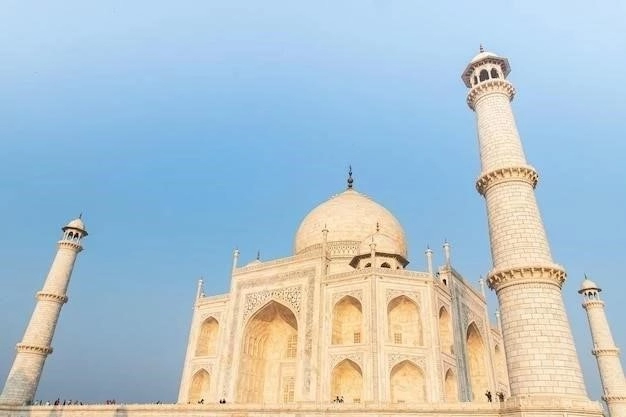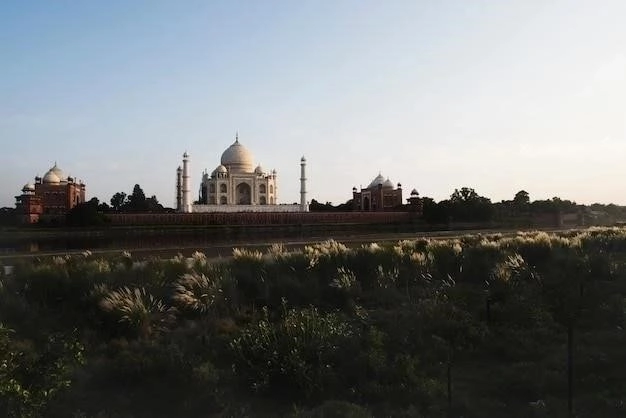Standing tall against the Delhi skyline, the Qutub Minar is not just the tallest brick minaret globally but a symbol of Indias rich and complex history. This UNESCO World Heritage Site, a breathtaking blend of Islamic architecture and Indian craftsmanship, has captivated visitors for centuries.
A History Etched in Stone and Verse
The Qutub Minars story begins in the late 12th century, a period of significant upheaval in India. Qutb ud-Din Aibak, the founder of the Delhi Sultanate, commissioned the towers construction in 1192. The reasons behind its construction are multifaceted:
- Victory Tower: It commemorated Aibaks victory over the last Hindu kingdom of Delhi, signifying the establishment of Islamic rule in the region.
- Minaret: Part of the Quwwat-ul-Islam Mosque complex, the minaret served as a platform for the muezzin to call the faithful to prayer.
- Symbol of Power: The towering structure served as a potent symbol of the newly established Delhi Sultanates authority and dominance.
The Qutub Minar was not the work of a single ruler. While Aibak initiated the construction, his successor, Iltutmish, added three more stories to the tower in the early 13th century. Later, Firoz Shah Tughlaq undertook renovations in the 14th century after an earthquake. This multi-generational effort is evident in the minarets architectural nuances, showcasing evolving styles over time.
Architectural Marvel: A Fusion of Styles
The Qutub Minar rises over 72 meters (240 feet) high٫ tapering gracefully from a 14.3-meter base to a 2.7-meter top. The towers five distinct stories٫ each marked by a projecting balcony٫ are adorned with intricate carvings and inscriptions. Key architectural features include:
- Fluted Design: The towers exterior features alternating angular and rounded flutes, a characteristic element of Islamic architecture, adding to its visual appeal.
- Material Palette: Constructed primarily from red sandstone and marble, the materials lend a warm, majestic hue to the structure, particularly stunning at sunrise and sunset.
- Calligraphic Inscriptions: Verses from the Quran, intricately carved in the Naskh and Kufic styles of Islamic calligraphy, embellish the minarets facade.
- Balconies: Each story is crowned with a beautifully crafted balcony, supported by intricately designed brackets, offering stunning panoramic views of the surrounding complex.
The Qutub Complex: Beyond the Minar
While the Qutub Minar is the complexs crown jewel, the surrounding area houses several other significant historical structures:
- Quwwat-ul-Islam Mosque: One of Indias earliest mosques, constructed using materials from demolished Hindu and Jain temples, showcasing the eras religious transition.
- Alai Minar: An unfinished minaret, intended to be even grander than the Qutub Minar, stands as a testament to the ambitious but unfulfilled plans of Sultan Alauddin Khalji.
- Iron Pillar: A metallurgical marvel, this 7-meter-tall iron pillar from the Gupta period (4th century CE) has remained remarkably rust-free for over 1600 years.
- Tombs: The complex houses the tombs of Iltutmish, Imam-ud-din, and other significant figures of the Delhi Sultanate, offering glimpses into the eras funerary architecture.
The Qutub Minar Today: A Legacy Preserved
Today, the Qutub Minar stands as a testament to Indias multifaceted past, attracting millions of visitors annually. Recognized as a UNESCO World Heritage Site in 1993, the complex is protected and maintained by the Archaeological Survey of India.
However, the monument faces challenges from pollution and the natural aging process. Conservation efforts are ongoing to preserve this architectural masterpiece for future generations.
Conclusion
The Qutub Minar is much more than a towering structure; its a chronicle of history, a testament to architectural brilliance, and a symbol of cultural fusion. Visiting the Qutub Minar is akin to stepping back in time, where each stone whispers tales of ambition, faith, and artistry. It serves as a powerful reminder of Indias enduring legacy and its ability to harmonize diverse influences over centuries.

The Enduring Significance of the Qutub Complex
Beyond its architectural magnificence, the Qutub Complex represents a pivotal period in Indian history, marking the advent of Islamic rule and the subsequent intermingling of cultural influences. This confluence is evident in the complexs architectural vocabulary, where indigenous Indian craftsmanship seamlessly blends with Islamic aesthetics. The intricate floral motifs, calligraphy, and geometric patterns narrate a story of cultural assimilation and the birth of a distinctive Indo-Islamic architectural style that would leave an indelible mark on the subcontinents artistic landscape.
Conservation Efforts and Challenges
Recognizing the Qutub Minars historical and architectural significance, the Archaeological Survey of India (ASI) has undertaken various conservation measures to mitigate the impact of time, pollution, and environmental factors. These efforts include regular cleaning, structural stabilization, and monitoring of the monuments condition. However, the ASI faces ongoing challenges in preserving this fragile heritage site, particularly in managing the high volume of tourists and mitigating the effects of air pollution on the delicate stonework. Implementing sustainable tourism practices and raising awareness about responsible heritage conservation remain crucial in ensuring the longevity of this iconic monument.
The Qutub Minar in the 21st Century: A Symbol of Shared Heritage
Today, the Qutub Minar stands not just as a reminder of the past but as a powerful symbol of Indias pluralistic identity. It embodies the nations capacity to embrace diversity and synthesize disparate cultural influences. As a UNESCO World Heritage Site, the Qutub Complex serves as a bridge between cultures, fostering understanding and appreciation for Indias rich historical tapestry. Its enduring presence inspires awe and wonder, reminding us of the enduring power of human creativity and the importance of safeguarding our shared heritage for generations to come;
The Qutub Minar: A Deeper Exploration of its Symbolism and Significance
Beyond its sheer grandeur, the Qutub Minar stands as a powerful symbol of a pivotal epoch in Indian history. Its construction marked not just the advent of Islamic rule in Delhi but also the genesis of a unique cultural confluence that would profoundly shape the subcontinents artistic and architectural landscape.
A Testament to Indo-Islamic Syncretism
The Qutub Complex, with the minaret as its centerpiece, embodies the spirit of Indo-Islamic syncretism. This fusion of architectural styles is evident in the intricate details that adorn the minaret and surrounding structures. The interplay of Islamic calligraphy with indigenous Indian motifs, such as the lotus flower and kalash, reflects a harmonious blending of artistic traditions.
This synthesis extends beyond mere aesthetics; it represents a deeper cultural exchange. The use of spolia – repurposed materials from demolished Hindu and Jain temples – in the construction of the Quwwat-ul-Islam mosque, for example, speaks to the complexities of conquest and assimilation that characterized this period. However, the incorporation of these elements within a new architectural vocabulary also points to a process of cultural adaptation and the emergence of a distinctly Indo-Islamic identity.
An Enduring Legacy: Architectural and Archaeological Significance
The Qutub Minars architectural significance lies not only in its scale and intricate craftsmanship but also in its innovative structural design. The towers tapering form, achieved through a series of diminishing diameters, showcases advanced engineering principles for its time. Furthermore, the use of different materials – red sandstone for the lower levels and marble for the upper stories – adds to its visual appeal while also reflecting the evolving architectural tastes of subsequent rulers.
From an archaeological perspective, the Qutub Complex offers a rich tapestry of historical layers. Excavations have unearthed remnants of earlier structures beneath the existing complex, indicating the sites continuous occupation and cultural significance dating back centuries. The Iron Pillar, with its enigmatic rust-resistant properties, further underscores the scientific and technological prowess of ancient India. These archaeological treasures provide invaluable insights into the lives, beliefs, and practices of the people who inhabited this region over millennia.
Preservation for Posterity: Balancing Tourism and Conservation
The Qutub Minars designation as a UNESCO World Heritage Site underscores its global significance and necessitates a comprehensive approach to its preservation. The Archaeological Survey of India (ASI) has implemented various conservation measures, including structural reinforcements, surface cleaning, and environmental monitoring, to mitigate the effects of time, pollution, and environmental degradation.
However, balancing the demands of tourism with the imperative of conservation remains an ongoing challenge. The sheer volume of visitors to this iconic site necessitates careful management to prevent further wear and tear. Sustainable tourism practices, such as limiting visitor numbers, promoting responsible behavior, and investing in interpretive signage, are crucial for ensuring that future generations can continue to marvel at the Qutub Minars splendor.
A Beacon of Cultural Harmony: The Qutub Minar in the 21st Century
In a world increasingly characterized by cultural clashes and divisions, the Qutub Minar stands as a potent symbol of coexistence and cultural synthesis. It serves as a tangible reminder of Indias long history of embracing diversity and assimilating influences from various civilizations. As a UNESCO World Heritage Site, the Qutub Complex fosters cross-cultural dialogue and promotes appreciation for the shared heritage of humanity.
The Qutub Minars enduring legacy lies not just in its architectural brilliance but also in its symbolic power to inspire unity, tolerance, and appreciation for the rich tapestry of human history. It beckons us to delve deeper into the complexities of the past, to understand the forces that have shaped our present, and to work towards a future where cultural diversity is celebrated as a source of strength and inspiration.
The Qutub Minar: A Symbol of Resilience and Continuity
The Qutub Minars story extends far beyond its initial construction. It has borne witness to centuries of change, weathering both natural forces and the ebb and flow of empires. Earthquakes, lightning strikes, and the passage of time have all left their mark, yet the tower still stands tall, a testament to the ingenuity of its builders and the enduring spirit of the monument itself.
A Tapestry of Rulers and Renovations
The Qutub Minars construction, spanning several decades and multiple rulers, reflects a continuity of ambition and artistic patronage. Each addition, from Iltutmishs expansions to Firoz Shah Tughlaqs repairs, adds a new layer to the narrative, showcasing evolving architectural styles while preserving the essential spirit of the original design. The tower thus becomes a physical manifestation of the lineage of power in Delhi, each ruler leaving their own imprint on its history.
Interpreting the Inscriptions: Voices from the Past
The Qutub Minar is not merely a visual spectacle; it is also a repository of history etched in stone. The intricate calligraphy adorning its surface offers valuable insights into the past. Arabic inscriptions, including verses from the Quran and proclamations from its patrons, speak to the religious and political motivations behind its creation. Studying these texts provides historians with a deeper understanding of the Delhi Sultanate, its rulers, and their aspirations.

The Qutub Complex: A Microcosm of Architectural Marvels
While the Qutub Minar rightfully claims center stage, the surrounding complex is itself a treasure trove of architectural wonders, each element contributing to the sites historical and artistic significance.
The Quwwat-ul-Islam Mosque: An Architectural Hybrid
Adjacent to the minaret stands the Quwwat-ul-Islam mosque, one of the earliest surviving mosques in India. Its construction, utilizing spolia from demolished temples, reflects the transition of power and the syncretic nature of early Indo-Islamic architecture. The mosques design, a blend of Islamic arches and pillars with traditional Indian corbelling techniques, marks an important step in the development of a distinct architectural vocabulary.
The Alai Minar: An Unfinished Legacy
The Alai Minar, though now in ruins, stands as a testament to the ambitions of Alauddin Khalji, who envisioned a tower even grander than the Qutub Minar. Its unfinished state offers a glimpse into the challenges and complexities of medieval construction projects. Despite its incomplete form, the Alai Minar remains a significant structure, prompting reflections on the passage of time and the aspirations of rulers who sought to leave their mark on history.
The Qutub Minar: A Continuing Source of Inspiration
The Qutub Minar continues to captivate and inspire, drawing visitors from across the globe. Its towering presence serves as a reminder of the power of human ingenuity and the enduring legacy of cultural exchange. As a symbol of resilience, syncretism, and artistic brilliance, the Qutub Minar stands as a beacon, illuminating the rich tapestry of Indian history and architecture for generations to come.
The Qutub Minar: An Enduring Symbol of Cultural Fusion and Architectural Brilliance
Standing tall amidst the bustling metropolis of Delhi, the Qutub Minar is not merely a historical monument; it is a testament to the confluence of cultures, the ingenuity of its builders, and the enduring power of art to transcend time. As a UNESCO World Heritage Site, it beckons visitors from all corners of the globe to marvel at its architectural grandeur and delve into the rich tapestry of history it embodies.
A Fusion of Styles: Architectural Influences and Innovations
The Qutub Minars architecture is a captivating blend of styles, reflecting the diverse influences that shaped its creation. While its soaring height and fluted design draw inspiration from earlier Afghan minarets, particularly the Minaret of Jam in Afghanistan, it also incorporates elements of indigenous Indian craftsmanship. The intricate carvings adorning its surface, featuring verses from the Quran alongside floral motifs and geometric patterns, exemplify the syncretic nature of Indo-Islamic art.
The minarets construction, primarily using red sandstone sourced from the region, highlights the builders understanding of local materials and their ability to adapt them to create a structure of immense scale and durability. The use of different materials – sandstone for the lower levels and marble for the upper stories – adds to its visual appeal while also reflecting the evolving architectural tastes of subsequent rulers.
A Window into the Past: Archaeological Significance and Historical Layers
The Qutub Complex, within which the minaret stands as a prominent landmark, serves as a rich archaeological site, offering invaluable insights into Delhis layered past. Excavations have unearthed remnants of earlier structures, including Hindu and Jain temples, indicating the sites continuous occupation and cultural significance long before the advent of the Delhi Sultanate. The presence of the Iron Pillar, a metallurgical marvel dating back to the Gupta period, further underscores the sites historical depth and scientific significance.
The complexs architectural evolution, with additions and modifications made by successive rulers, provides a tangible record of changing dynasties and architectural trends. The Quwwat-ul-Islam Mosque, adjacent to the minaret, exemplifies the adaptive reuse of materials and the fusion of architectural styles, with its incorporation of pillars and architectural elements from pre-existing temples. Each structure within the complex contributes to a nuanced understanding of the sites historical trajectory, showcasing the interplay of political power, religious beliefs, and artistic expression.
A Symbol of Resilience: Enduring Natural Challenges and Human Impact
Over the centuries, the Qutub Minar has withstood the test of time, enduring natural calamities and the impact of human interventions. Earthquakes, lightning strikes, and the relentless forces of weathering have left their mark on the structure. However, through careful conservation efforts and restoration initiatives, the minaret continues to stand tall, a testament to the resilience of its design and the dedication of those committed to its preservation.
The Archaeological Survey of India (ASI) plays a crucial role in safeguarding the Qutub Minar and the surrounding complex. Conservation efforts focus on structural stability, using scientific techniques to monitor and address any signs of deterioration. The ASI also implements measures to manage tourism, balancing public access with the need to protect this fragile heritage site for future generations.
A Legacy for the Future: The Qutub Minars Enduring Significance
The Qutub Minars significance extends far beyond its architectural brilliance. It stands as a powerful symbol of cultural fusion, representing the harmonious coexistence of diverse faiths and artistic traditions. Its towering presence serves as a reminder of the interconnectedness of human history and the enduring legacy of cultural exchange.
As a UNESCO World Heritage Site, the Qutub Minar attracts visitors from all walks of life, fostering cross-cultural understanding and appreciation. Its continued preservation ensures that future generations will have the opportunity to marvel at its splendor and draw inspiration from its rich historical and architectural legacy. The Qutub Minar, in its enduring presence, reminds us of the power of human ingenuity, the beauty of cultural diversity, and the importance of safeguarding our shared heritage for the benefit of all humankind.

Beyond the Tower: Exploring the Rich Tapestry of the Qutub Complex
While the Qutub Minar undoubtedly reigns as the most iconic structure within the complex, it is merely one thread in a rich tapestry of architectural marvels and historical narratives. The wider Qutub Complex, encompassing several significant monuments, offers a multifaceted glimpse into the artistic, religious, and political landscape of its time.

Quwwat-ul-Islam Mosque: A Symbol of Conquest and Transformation
Adjacent to the Qutub Minar stands the Quwwat-ul-Islam Mosque, marking a pivotal moment in the history of Delhi. Commissioned by Qutub-ud-din Aibak, it holds the distinction of being the first mosque built in Delhi after the Ghurid conquest. The mosques construction incorporated elements from demolished Hindu and Jain temples, a testament to both the dominance of the new regime and the pragmatic reuse of existing resources. This fusion of architectural styles is evident in the mosques hypostyle prayer hall, where intricately carved pillars, repurposed from earlier structures, stand alongside Islamic arches and calligraphy.
Iltutmishs Tomb: A Mausoleum of Architectural Refinement
The tomb of Iltutmish, successor to Qutub-ud-din Aibak, stands as a testament to the architectural refinement achieved during his reign. Built in the early 13th century, the tomb showcases a sophisticated interplay of red sandstone and white marble, a stylistic choice that would become a hallmark of Indo-Islamic architecture. The tombs interior, once adorned with intricate stucco decoration and verses from the Quran, exemplifies the artistic sensibilities of the period.
Alai Darwaza: A Gateway to Architectural Grandeur
Completed in 1311 CE during the reign of Alauddin Khalji, the Alai Darwaza stands as a magnificent gateway to the mosque complex. Constructed entirely of red sandstone and adorned with intricate marble detailing, the Alai Darwaza showcases the mastery of Islamic architectural principles, particularly in its use of symmetry, geometric patterns, and calligraphy. This monumental gateway serves as a fitting prelude to the architectural splendor that awaits within the complex.
The Significance of Inscriptions: Unlocking Historical Narratives
Beyond their aesthetic appeal, the inscriptions found throughout the Qutub Complex provide invaluable historical insights. Inscribed in Arabic and Nagari scripts, these inscriptions offer details about the construction of various structures, the patronage of rulers, and even glimpses into the social and religious context of the time. They serve as valuable primary sources for historians, allowing for a deeper understanding of the complexs evolution and the motivations of its builders.
The Qutub Complex: A Legacy for the Ages
The Qutub Complex, with its diverse architectural marvels and rich historical narratives, offers a captivating journey through time. It stands as a testament to the dynamism of cultural exchange, the evolution of architectural styles, and the enduring power of human creativity. As a UNESCO World Heritage Site, the complex continues to inspire awe and wonder, reminding us of the interconnectedness of our shared human heritage and the importance of preserving these invaluable treasures for generations to come.










